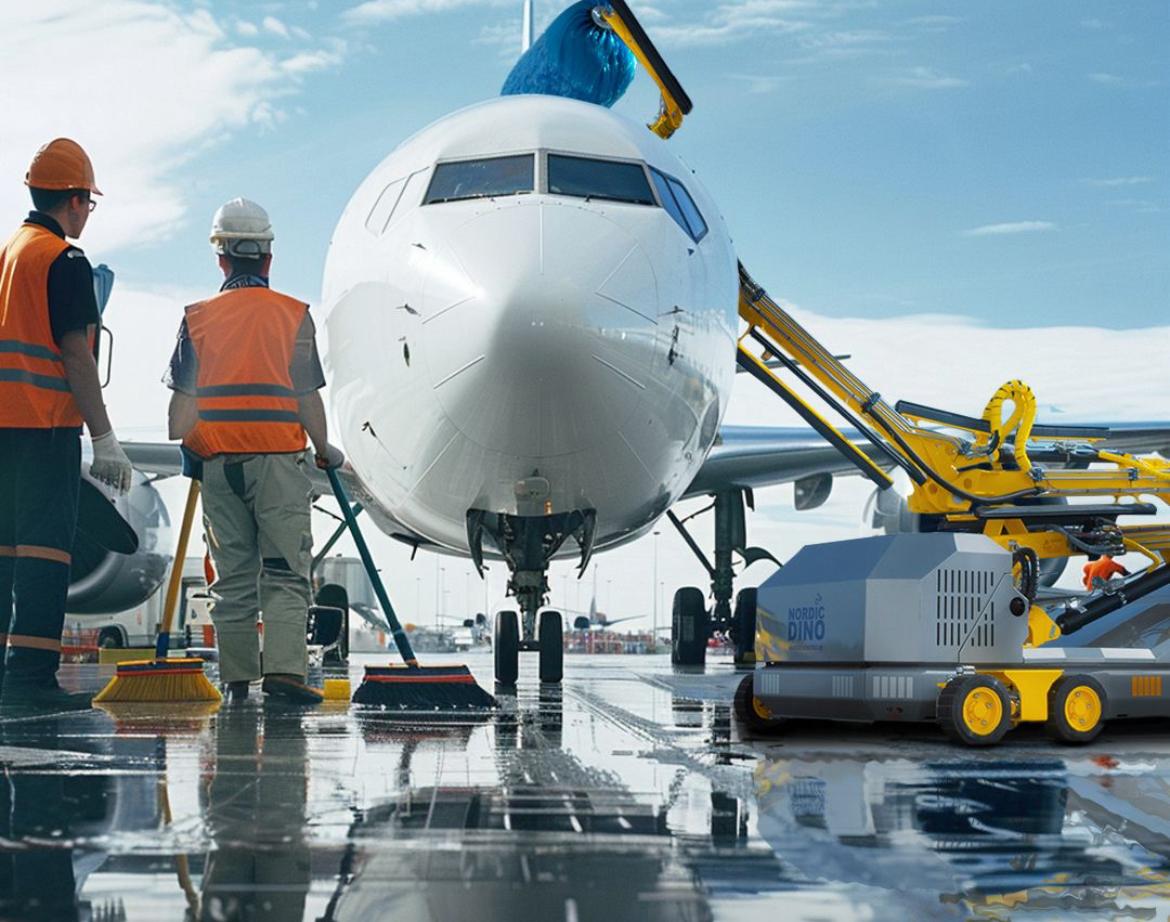Insect season: an overlooked threat to aircraft efficiency
 Aircraft performance during insect season faces a costly challenge that many airlines underestimate. Research shows that insect accumulation on an aircraft’s laminar flow area and increase fuel consumption by 1.1% to 4.4%, with contamination levels as low as 400 insects creating measurable drag penalties. In other words, insect season can cost airlines millions annually.
Aircraft performance during insect season faces a costly challenge that many airlines underestimate. Research shows that insect accumulation on an aircraft’s laminar flow area and increase fuel consumption by 1.1% to 4.4%, with contamination levels as low as 400 insects creating measurable drag penalties. In other words, insect season can cost airlines millions annually.
The hidden costs of contamination
During insect season, bug residue tends to build up quickly on the nose, wings, and forward sections of aircraft. Without proper aircraft exterior cleaning, the drag they produce counteracts the force of thrust generated by engines and the lift generated by wings. This increases fuel consumption, creating additional operational expenses for airlines.
According to a detailed study by the German Aerospace Center (DLR), insect accumulation on natural laminar flow (NLF) wings can cause significant fuel penalties. The study showed that contamination levels of about 400 insects can increase fuel consumption by roughly 1.1% for shorter flights (~750 km) and up to 4.4% for longer missions.
“Given that fuel typically accounts for 25-30% of an airline's total operating expenses, even a 1-4% increase in fuel burn due to insect contamination can cost airlines millions of dollars, especially for fleets with many daily flights,” says Veronika Andrianovaite, Chief Commercial Officer of Nordic Dino Robotics.
The insect problem
The threat of insect contamination is typically limited to operational phases close to the ground. Even during critical phases of flight, the aircraft speed is high enough to cause a rupture of the insect body.
“It is estimated that 50-60 % of the insects are collected during the ground run and the balance at low altitude during climb out, final approach and landing,” Nordic Dino expert explains. “Depending on insect size, impact angle and impact speed, insect residue can account for up to a fourth of an aircraft’s overall contamination.”
Insect activity for air travel has distinct regional and seasonal patterns. According to Andrianovaite, it reaches its peak during warmer months:
“In Europe, for instance, it’s spring and summer. In many parts of Asia, it is linked to the monsoon season, which typically brings increased rainfall and humidity and can last until October.”
A solution that works
Given the cost impact of insect contamination, frequent aircraft cleaning becomes critical during peak insect activity periods. With airlines currently in high season across many regions, efficient cleaning solutions are essential for maintaining operational performance.
Robotic aircraft cleaning equipment offers a fast and safe solution to remove contaminants, including dead bugs – especially crucial during high-frequency, warm-weather operations when insect buildup accelerates, says Andrianovaite:
“Using modern aircraft washing robots, such as the Nordic Dino, can help to reduce aircraft exterior cleaning times by up to 80%,” “For wide-body airliners like the Airbus A330 and the Boeing 777, the time spent on exterior cleaning can be shortened from 8 to 4 hours, and for narrow-body jets like the Boeing 737, the required aircraft-on-ground (AOG) time is reduced from 3 to 1 hour.”
Aircraft washing robots eliminate long hours of manual labor-intensive washing procedures. In an industry that requires the highest levels of efficiency, these solutions bring serious long-term benefits – making sure tiny insects don't create big problems for performance and profitability.
